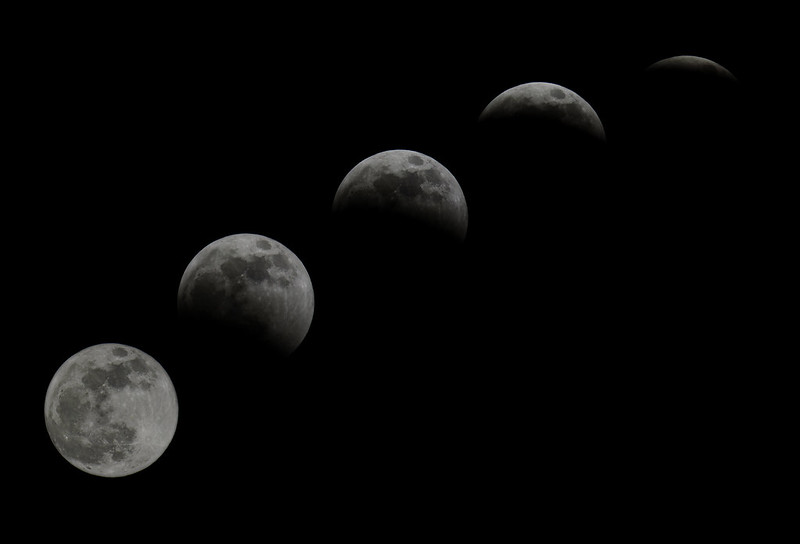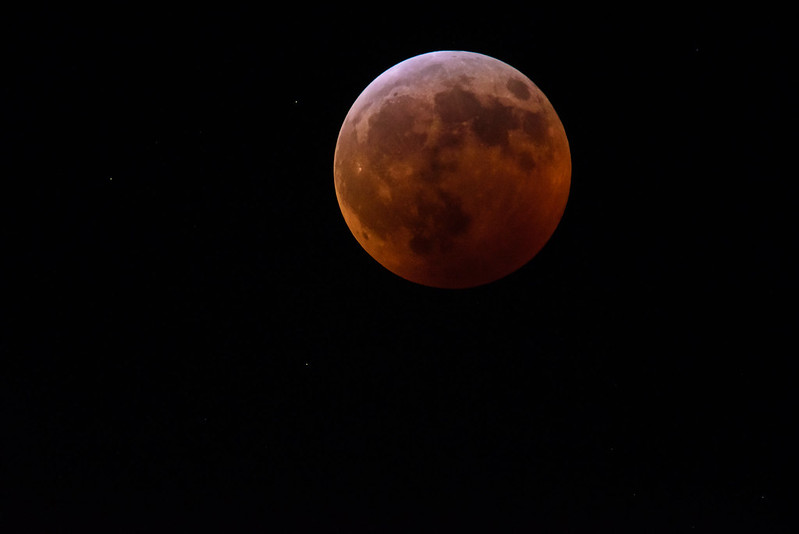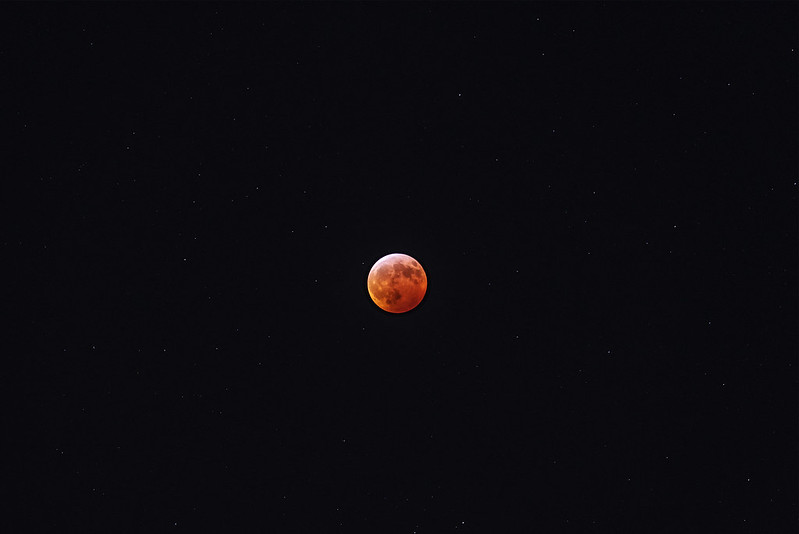
The full moon of January 2019 came along with several names: Super Moon, Wolf Moon, Snow Moon, Blood Moon, Super Wolf Blood Moon. Super Moon because the moon was a bit closer to earth than usual, making the moon appear a little larger and brighter than usual. Wolf Moon because of the packs of wolves that once howled near Native American villages in midwinter (or Snow Moon). Blood Moon because of the red color the eclipsed moon takes on.
Of course the weather rarely cooperates with photographers, and this night was no exception. Clouds moved in and out of the area, and the temperatures was 6 degrees F. The cold weather usually helps with sky photography because there is little haze in cold weather, but this time it only served to make detailed work painful.

The eclipse began just after 8:30pm, but it was not really visible until 9:40. The moon gradually disappeared by 11:20 where it then became fully eclipsed and took on the famous red color of the Blood Moon.
Photographing the moon is usually very easy - it's very bright actually. The eclipsed moon is dim, and with such a long lens arrangement, my aperture would only go to F13 - very small, and will not let a lot of light into the camera. So, challenges had to be overcome.
The best part of the dimly lit moon is the fact that you can actually capture the stars in the sky along with the moon.



No comments:
Post a Comment